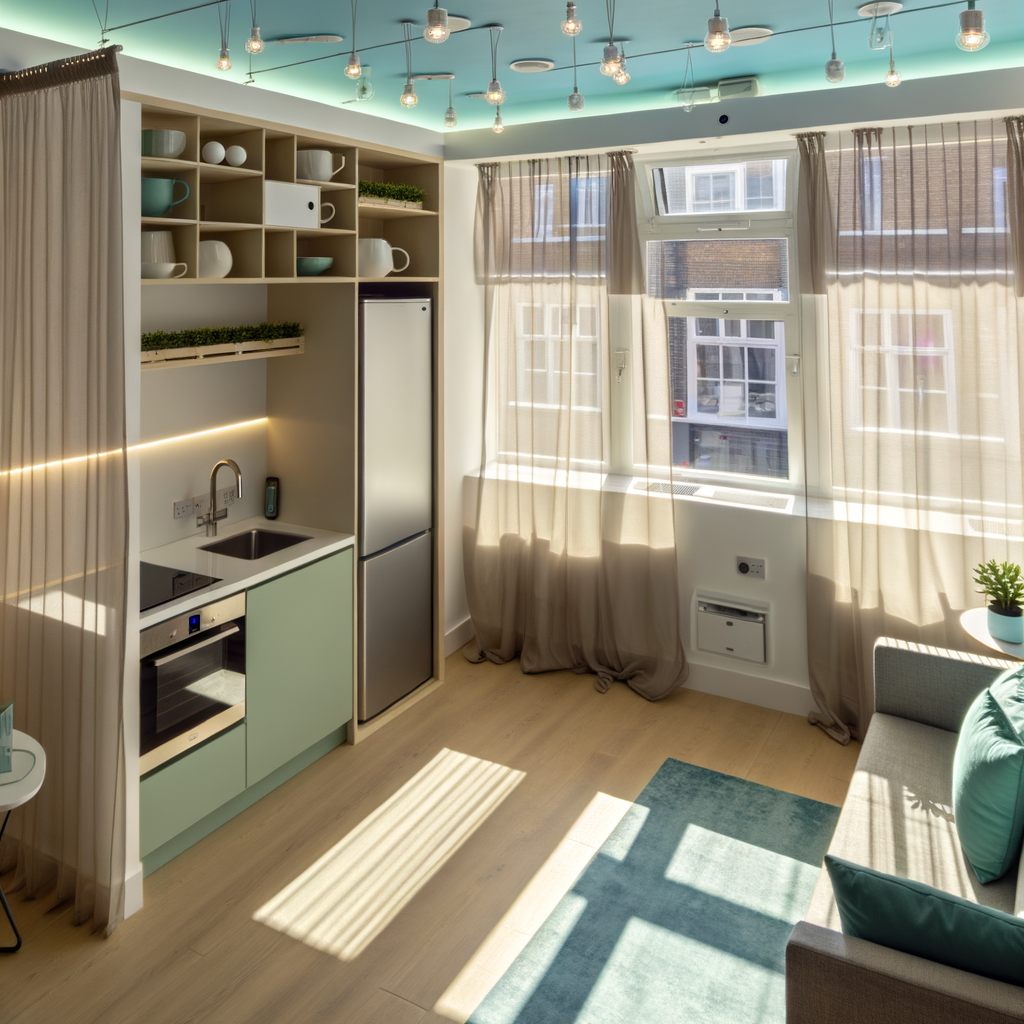How to Build a Smart, Energy-Efficient Apartment on a Budget: A Renter’s Step-by-Step Guide
Smart home technology isn’t just for homeowners. Renters can also enjoy a more energy-efficient, comfortable, and modern apartment—without breaking the bank or breaking their lease.
Whether you want to lower utility bills, reduce your environmental impact, or simply love the convenience of automation, this step-by-step guide will show you how to create a smart, eco-friendly apartment on a budget and without making permanent changes.
Why Go Smart and Energy-Efficient as a Renter?
- Save Money: Smart devices and efficiency upgrades can lower your electricity, heating, and cooling bills.
- Convenience: Automations make everyday living easier—from lights that turn on when you arrive to voice-controlled everything.
- Reduce Your Footprint: Cut your energy usage and reduce waste, making your lifestyle more sustainable.
- Portable Upgrades: The best solutions for renters are plug-and-play—you can take them with you when you move.
Ready to transform your space? Here’s a step-by-step plan for upgrading your apartment, the renter-friendly way.
Step 1: Assess and Plan Your Smart Apartment Transformation
Look for “Quick Wins”
- Identify the biggest energy drains: lights, heating/cooling, and electronics.
- Take note of inefficient light bulbs (incandescent, halogen, or old CFLs).
- Check if you have manual thermostats, basic surge protectors, or old appliances.
Set a Realistic Budget
- How much can you invest up front? Consider starting with $100-$300 for significant upgrades.
- Remember, you can build gradually—start with affordable essentials, then add more devices over time.
Step 2: Focus on Lighting—The Instant Payoff
Lighting typically accounts for 10-20% of your energy bill. Fortunately, it’s also one of the easiest things to upgrade as a renter.
Switch to LED Bulbs
- LEDs use up to 85% less energy and last years longer than old-fashioned bulbs.
- Choose warm white (2700–3000K) for cozy living areas or daylight (5000–6500K) for workspaces.
Add Smart Bulbs or Plugs
- Smart bulbs (like Philips Hue or Wyze) let you schedule, dim, or change color with your phone or voice assistant.
- For lamps or fixtures with non-removable bulbs, use a smart plug. It gives you remote on/off control and scheduling.
- No wiring needed—just screw in or plug in. Perfectly renter-friendly.
Automate with Schedules and Sensors
- Set lights to turn off automatically at bedtime or when you leave for work.
- Install motion sensors in entryways or closets for no-touch lighting.
Step 3: Master Temperature Control (and Slash Utility Costs)
Heating and cooling are often the biggest energy expense for apartment dwellers. Smart solutions help you cut waste and stay comfortable—without altering permanent systems.
Install a Smart Thermostat—If Allowed
- If you control your own thermostat, check with your landlord. Many smart thermostats (like Google Nest or ecobee) have quick, reversible installation.
- Programmable features save energy by adjusting temperature when you’re away or sleeping.
No-Thermostat? Try Smart Plugs for Space Heaters and A/C
- Connect window A/C units or space heaters (with manual controls) to smart plugs.
- Use routines or schedules to turn them off when you’re not home.
Draft-Proof and Weatherize (Removably)
- Seal drafty windows with removable weatherstripping or thermal curtains.
- Use door draft stoppers—no tools needed!
- These upgrades improve comfort and efficiency year-round.
Step 4: Smart Plugs and Power Management
Phantom (standby) power can account for up to 10% of your electricity bill. Luckily, smart plugs are a game changer for renters.
Benefits of Smart Plugs and Switches
- Turn any electronic device into a smart device—think lamps, fans, coffee makers, or TVs.
- Control via phone, voice, or automatically with routines and timers.
- Track energy usage and identify power-hungry devices.
- Safe, easy, non-permanent installation—just plug and play!
Set Up Automated Routines
- Ensure all electronics turn off when you leave home or go to bed.
- Create wake-up routines with lights and coffee makers timed perfectly.
Step 5: Reduce Water Waste—Yes, Renters Can!
Saving water is just as important for renters. Many low-cost upgrades require zero plumbing skills and can dramatically cut your consumption and heating costs.
Install Low-Flow Showerheads and Aerators
- Low-flow showerheads screw on in minutes and can save up to 2,700 gallons of water per year.
- Faucet aerators: Most simply twist on and reduce flow by up to 50%—no tools or permission needed!
- Take them with you when you move.
Add a Smart Leak Sensor
- Place wireless leak sensors under sinks, appliances, or near the water heater (in-unit).
- Get instant phone alerts if water is detected—prevent costly water damage!
Step 6: Build Your Smart Home Ecosystem
Your smart upgrades can “talk” to each other. The key: pick a central platform for control and automation.
Choose a Smart Home Hub (or Go Hubless)
- Amazon Alexa, Google Home, or Apple HomeKit are the most popular.
- Many modern devices work without a separate hub—just WiFi and an app. But a hub can enable faster automations and local control.
Set Up Voice Assistants
- Smart speakers or displays with built-in assistants (like an Echo Dot or Google Nest Mini) let you control devices hands-free.
- Great for accessibility, multitasking, or impressing guests.
Create Intelligent Scenes and Automations
- “Leaving Home” scene: Turns off all lights, electronics, and adjusts temperature.
- “Good Night” routine: Dims lights, powers down media, and arms leak sensors.
- IFTTT: Connect even more devices with “If This Then That” automation recipes.
Step 7: Cut Down on Vampire Power
Chargers, TVs, gaming consoles, and even microwaves draw power 24/7—unless unplugged. Smart plugs make this easy, but these habits help too:
- Plug chargers and electronics into a central power strip (or smart plug) and turn it off when not in use.
- Unplug unnecessary appliances before leaving for vacation or extended trips.
- Set reminders or use automation to check for “energy leaks.”
Step 8: Track and Optimize Your Savings
To maximize your impact, measure




